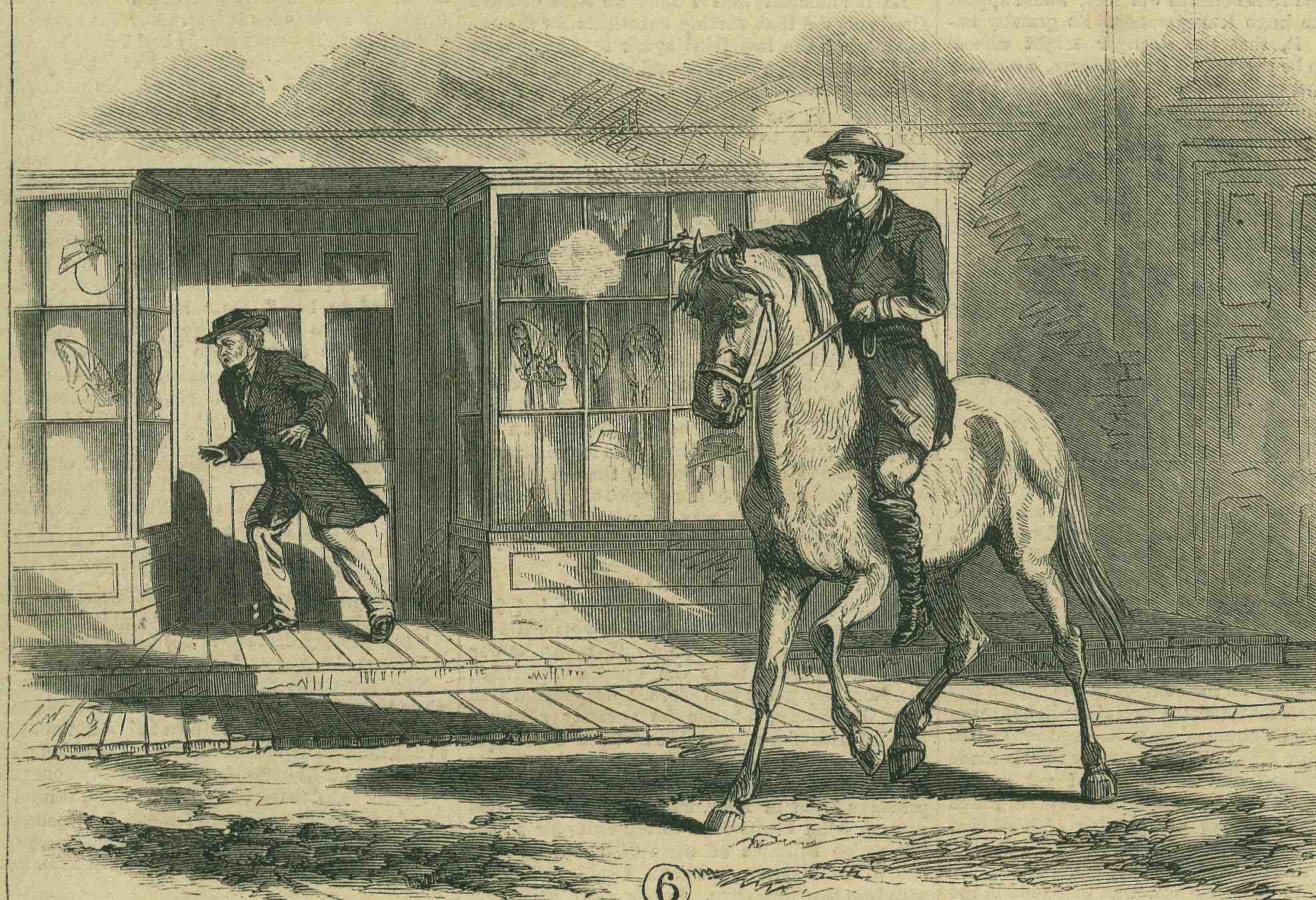During the U.S. civil war (1861-1865), Canadians were divided about which side their sympathies—and sometimes covert support—lay. Those who supported the Confederate south thought that breaking up the United States would lessen the danger of a bigger, stronger neighbour responding to the American cry of “Manifest Destiny,” the doctrine that called for absorption of Canada under a U.S. flag flying as far as the North Pole. Those whose sympathies lay with the Union favoured the abolition of slavery.
Conflicting interests, alliances, and passions threatened to drag Britain, Canada (present day Quebec and Ontario), and the Maritime colonies (New Brunswick, Nova Scotia and Prince Edward Island) into the American war, as the Union forces of the north battled the Confederate forces of the south, in the bloodiest war that history had yet seen.
Tensions were stretched tight. A Union warship hijacked Confederate delegates from a British mail ship sailing for England. British shipyards built and outfitted warships for the Confederates, including the Alabama, which captured more than two dozen Union ships, burning most of them, before it was sunk by the Union. Canadian sympathizers helped Confederates capture a passenger steamship that plied coastal waters between New York and Portland, Maine. Operating from a Canadian base in Windsor, Confederates captured two American merchant ships on Lake Erie and attempted to free Confederate soldiers imprison on Johnson’s Island.
But it was the St. Albans raid that posed the greatest threat, a daring Confederate ploy, John A. MacDonald later told the Canadian legislature. “The south,” said Macdonald, “had made it part of their plan of operations to make Canada the basis of incursions upon their enemy for the purpose of embroiling the United States and Great Britain in war,” as the Montreal Herald, reported February 18, 1865.
The St. Albans raid story starts on October 10, 1864, a day of coincidence. In Quebec City’s ornate St. Louis Hotel, where the imposing Chateau Frontenac now stands, delegates from Canada and the Maritimes assembled for a second conference seeking to unite in confederation, spurred in part by the U.S. Civil war. At the small Vermont town of St. Albans, 15 miles south of Canada, three young men arrived that day from Montreal, claiming they had come from New Brunswick on a sporting vacation. Eighteen more friendly men arrived from Montreal during the next seven days, with accents that sounded more like Kentucky bluegrass than Maritime bluenose. They were, indeed all 21 from Kentucky, Confederate soldiers who had escaped after capture by Union forces to find refuge in neutral Canada, where they had been recruited by their leader, Bennett Young, to strike a blow against the North.
On October 19, they donned their Confederate uniforms; held up three St. Albans banks, collected $208,000; tried to set the town on fire but managed to burn down only a woodshed; stole a group of horses, and high-tailed it back to Canada (where they changed again into civilian clothes), pursued by a few of the braver men of the town. One of the raiders was shot and killed; two of the pursuers were shot, one fatally.
In Canada, the police captured 13 of the raiders and $80,000 of the stolen money, in a shoot-out in which a policeman was killed. The captured raiders were held in a Montreal jail, pending extradition hearings before a police magistrate.
Into this explosive situation came a Montreal police court magistrate, C.J. Courson, who freed the bank robbers and gave them back their stolen money, to the great alarm and dismay of John A. Macdonald and his government. After the bank raid, extradition hearings, in which the United States sought to have the robbers sent south to face American justice, dragged on interminably before Magistrate Courson. The government expected the robbers to be extradited, and government lawyers argued in support of the American request. But Courson—whom Macdonald called “this wretched pig of a police magistrate”—ruled that his court had no jurisdiction, and set the robbers free.
“The raiders then left the Court, surrounded by their friends, who of course were loud in their congratulations,” the Montreal Herald reported December 13, 1864. Apparently, the raiders enjoyed the support of at least some Montrealers.
At least a week before his decision, Courson advised Police Chief Guillanme Leamothe that if the robbers were discharged, the stolen money would have to be promptly returned to them, according to testimony at a hearing the day after Courson released the prisoners, the Herald reported.
The Americans roared with anger and threats. In the aftermath of the St. Albans raid, Canada formed the country’s first secret service, the forerunner of the North West Mounted Police, and recruited 400 young Canadians to patrol the border. The young recruits had much time on their hands, and to keep them out of trouble they were equipped with “morally-approved” reading material.
Unfamiliar Canadian history
